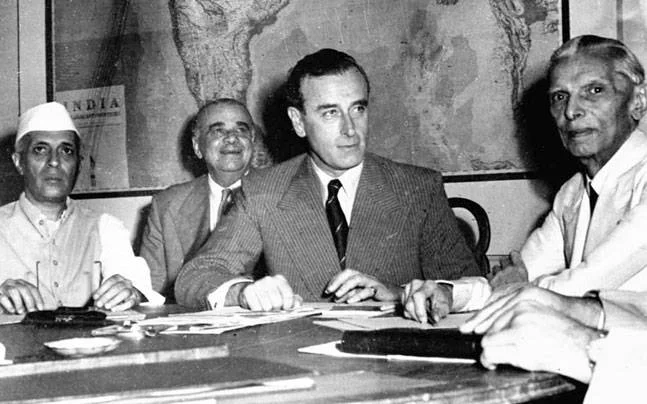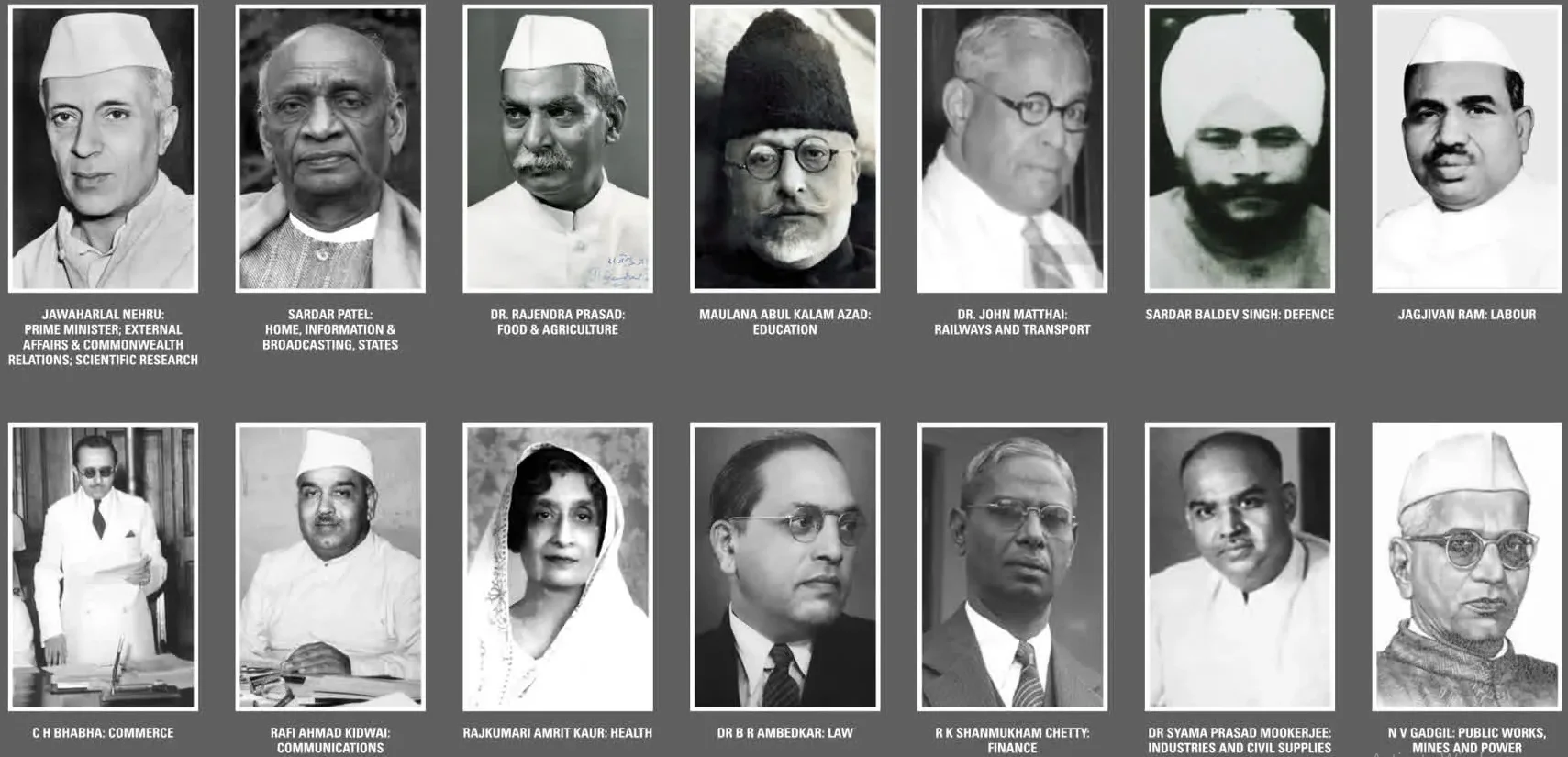The Indian Independence Act of 1947 marked a pivotal moment in history, officially ending British rule and leading to the creation of two independent dominions—India and Pakistan. This transition was facilitated by the Mountbatten Plan, while the Interim Government of 1946 set the stage for the handover of power. Following independence, the first Cabinet of Free India, led by Jawaharlal Nehru, took charge, guiding the nation through its early days of sovereignty.
Key Provisions and Impact of the Indian Independence Act of 1947
Initiation: On June 3, 1947, the British Government reiterated that any Constitution formulated by the Constituent Assembly of India (established in 1946) would not be applicable to regions of the country unwilling to accept it.

- Mountbatten Plan: Mountbatten, serving as the Viceroy of India, introduced the partition plan, commonly recognized as the Mountbatten Plan, on the same day.
- Support to Plan: Both the Congress and the Muslim League endorsed the plan, and it was promptly implemented through the enactment of the Indian Independence Act of 1947.
Enroll now for UPSC Online Course
The provisions of this legislation encompassed the following key points
- End of British Rule: It marked the conclusion of British rule in India, officially declaring India as an independent and sovereign state on August 15, 1947.
- Partition: The act facilitated the partition of India, establishing two autonomous dominions—India and Pakistan—each with the right to secede from the British Commonwealth.
- Administrative Changes: The legislation abolished the position of Viceroy, introducing a Governor-General for each dominion appointed by the British King on the advice of the dominion cabinet. The British government held no responsibility for the governance of India or Pakistan.
- Legislative Powers: It stripped the British Monarch of the authority to veto bills or request the reservation of certain bills for approval. This prerogative was retained by the Governor-General, who had full power to assent to any bill in the name of His Majesty.
- Constitutional Heads: The Governor-General of India and provincial governors were designated as Constitutional (nominal) heads of the states, obligated to act on the advice of their respective councils of ministers in all matters.
- Removal of Imperial Title: The royal titles of the King of England no longer included the title of Emperor of India.
- Empowerment of Constituent Assemblies: The act conferred authority upon the Constituent Assemblies of both dominions to formulate and adopt Constitutions, enabling them to repeal any act of the British Parliament, including the Independence Act itself.
- Legislative Autonomy: Constituent Assemblies were empowered to legislate for their respective territories until the enforcement of new Constitutions.
- Acts of the British Parliament passed after August 15, 1947, were not applicable unless extended by the dominion’s legislature.
- Commonwealth Affairs: The legislation abolished the position of the Secretary of State for India, transferring responsibilities to the Secretary of State for Commonwealth Affairs.
- Princely States: Paramountcy over Indian princely states lapsed, and treaty relations with tribal areas ceased on August 15, 1947.
- Princely states were granted the freedom to join either the Dominion of India, the Dominion of Pakistan, or remain independent.
- Governance by Government of India Act of 1935: Provision was made for the governance of dominions and provinces by the Government of India Act of 1935 until new Constitutions were drafted, with dominions authorized to make modifications.
- Civil Services: The act discontinued appointments and post reservations by the Secretary of State for India, ensuring that members of the civil services appointed before August 15, 1947, continued to enjoy entitled benefits.
At the stroke of midnight on August 14-15, 1947, British rule concluded, transferring power to the independent Dominions of India and Pakistan. Mountbatten assumed the role of the first Governor General of the Dominion of India, swearing in Jawaharlal Nehru as the inaugural Prime Minister of independent India.
About Interim Government (1946)
Formation: Under the Cabinet Mission elections were held in the provincial assemblies for the Constituent Assembly in July 1946. Shortly after, on July 29, 1946, the Muslim League gave a call for “direct action” from August 16 to achieve Pakistan. It was followed by communal riots. The Interim Government was sworn in on September 2, 1946. In October 1946, the League also joined it.
- The members of the interim Government were members of the Viceroy’s Executive Council. The Viceroy continued to be the head of the Council. But, Jawaharlal Nehru was designated as the Vice-President of the Council.
| The members of the interim Government | Portfolios |
| Jawaharlal Nehru | Vice-President of the Council; External Affairs & Commonwealth Relations |
| Sardar Vallabhbhai Patel | Home, Information & Broadcasting |
| Dr. Rajendra Prasad | Food & Agriculture |
| Dr. John Mathai | Industries & Supplies |
| Jagjivan Ram | Labour |
| Sardar Baldev Singh | Defense |
| Liaquat Ali Khan (Muslim League) | Finance |
| Abdur Rab Nishtar (Muslim League) | Posts & Air |
| Asaf Ali | Railways & Transport |
| C.H. Bhabha | Works, Mines & Power |
| C. Rajagopalachari | Education & Arts |
| I.I. Chundrigar (Muslim League) | Commerce |
| Ghaznafar Ali Khan (Muslim League) | Health |
| Joginder Nath Mandal (Muslim League) | Law |
First Cabinet of Free India during 1947
| The members | Portfolios |
| Jawaharlal Nehru | Prime Minister; External Affairs & Commonwealth Relations; Scientific Research |
| Sardar Vallabhbhai Patel | Home, Information & Broadcasting; States |
| Dr. Rajendra Prasad | Food & Agriculture |
| Dr. John Mathai | Railways & Transport |
| Maulana Abul Kalam Azad | Education |
| R.K. Shanmugham Chetty | Finance |
| Dr. B.R. Ambedkar | Law |
| Jagjivan Ram | Labour |
| Sardar Baldev Singh | Defence |
| Raj Kumari Amrit Kaur | Health |
| C.H. Bhabha | Commerce |
| Rafi Ahmed Kidwai | Communication |
| Dr. Shayama Prasad Mukherji | Industries & Supplies |
| V.N. Gadgil | Works, Mines & Power |

Enroll now for UPSC Online Course
| Must Read | |
| Current Affairs | Editorial Analysis |
| Upsc Notes | Upsc Blogs |
| NCERT Notes | Free Main Answer Writing |
Conclusion
The Indian Independence Act, coupled with the efforts of the Interim Government and the first Cabinet of Free India, laid the foundation for India’s journey as an independent nation. These developments not only symbolized the end of colonial rule but also initiated the process of nation-building, with leaders like Nehru and Patel playing crucial roles in shaping the future of the newly independent India.
Sign up for the PWOnlyIAS Online Course by Physics Wallah and start your journey to IAS success today!
| Related Articles | |
| Indian Independence Act 1947 | Mountbatten Plan |
| List of Governor Generals of India | British Policy in India |

 GS Foundation
GS Foundation Optional Course
Optional Course Combo Courses
Combo Courses Degree Program
Degree Program









